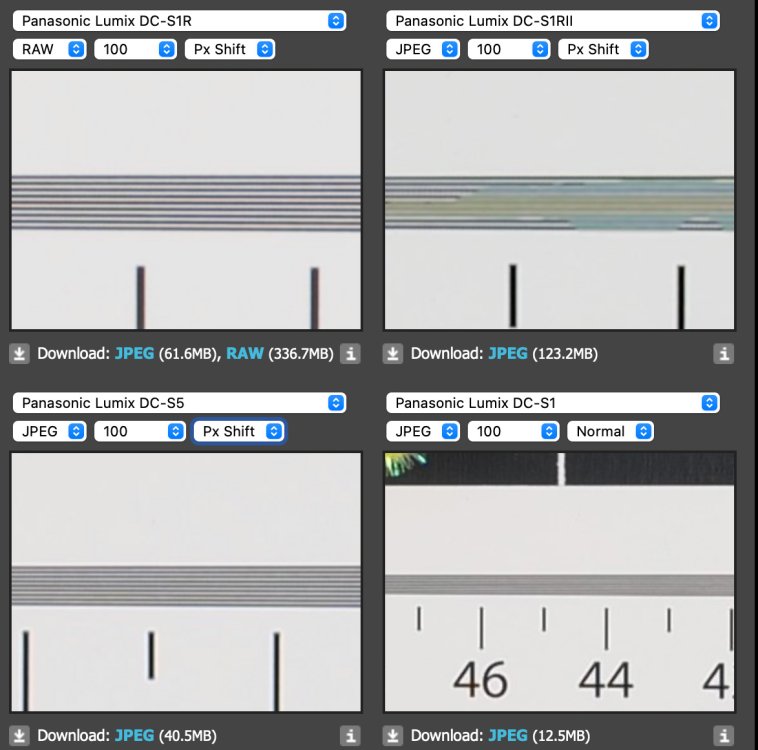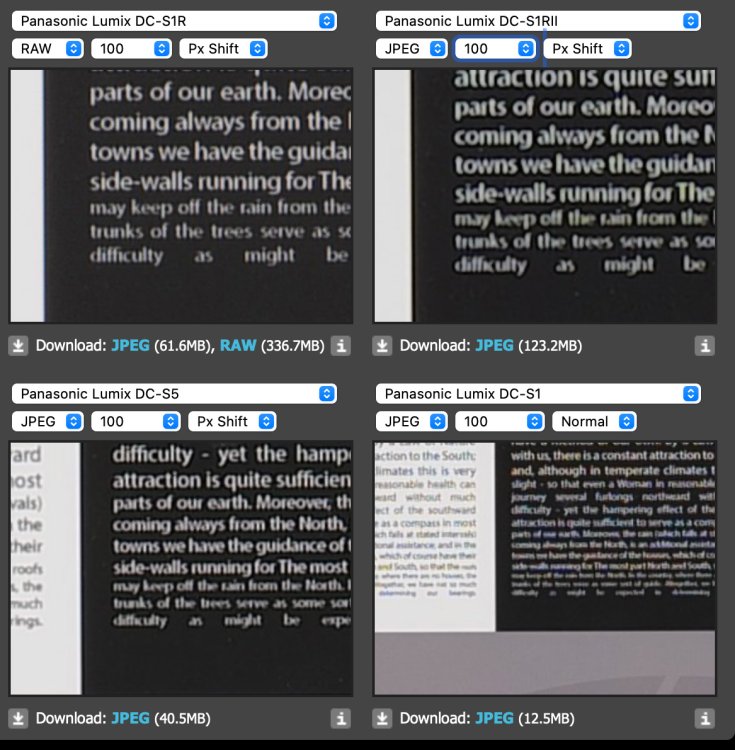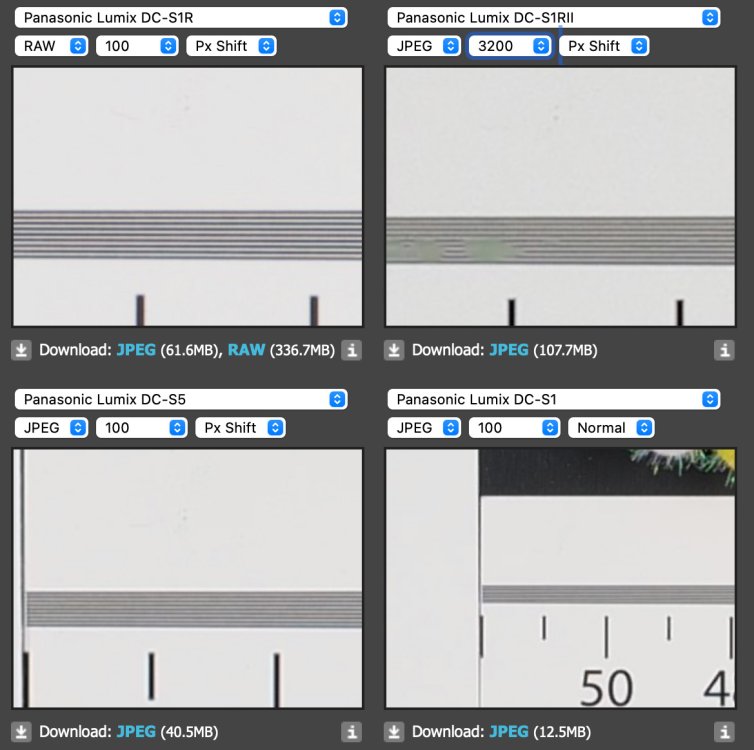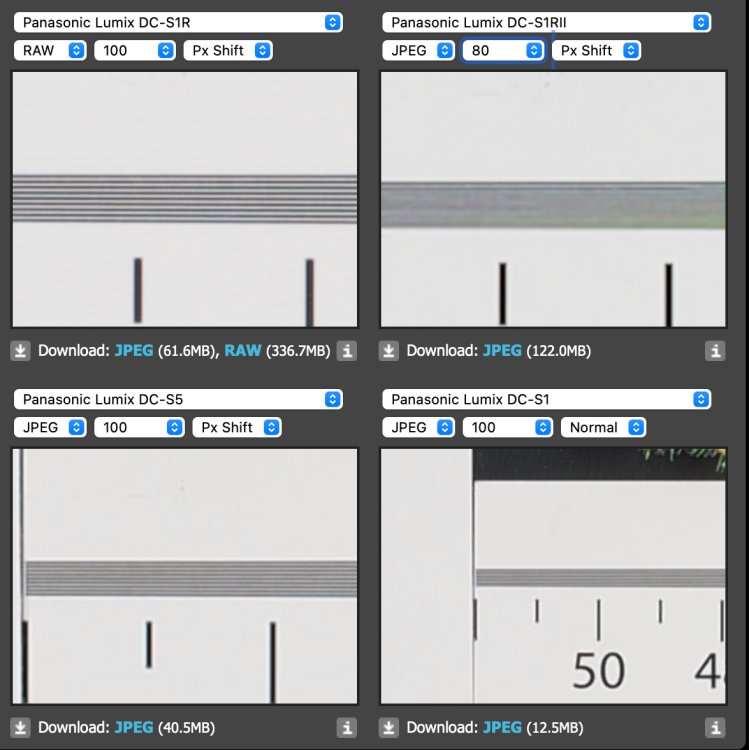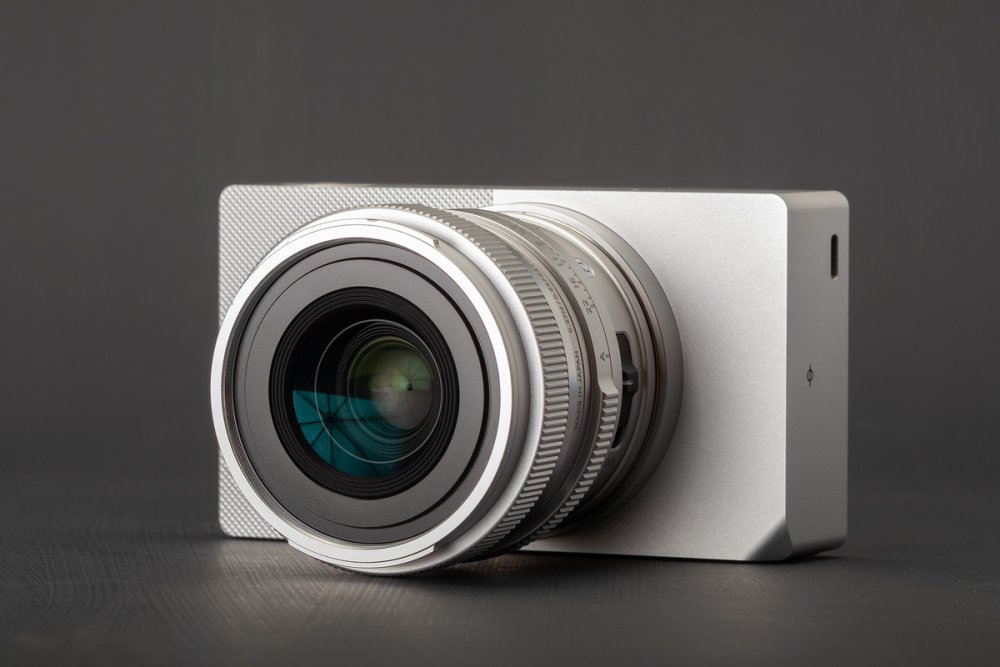-
Posts
15,626 -
Joined
-
Last visited
Content Type
Profiles
Forums
Articles
Everything posted by Andrew - EOSHD
-
Yes but I don't quite see the point of it Is the codec better than N-RAW? I'd say yes from a usability point of view, not so much from an image quality or special sauce standpoint. The use case certainly comes into it, but both images are so good as to be almost interchangeable. Whereas in the hay day of cinema cameras it was GH2 vs RED EPIC, a very big difference in the image. Although it didn't impress Francis Ford Coppola much. Yes even a Zf would thrash it at higher ISOs. Can you post some examples? If the magic is there then I'm far more interested in it. I have a RED EPIC... But hardly use it, even though it's a former Hollywood workhorse camera I have absolutely no interest in lugging it around the streets of Berlin for some reason.
-
All I know about Amy is she thinks Barack Obama would like Django Unchained.
-
Was catching up with my new favourite magazine The Atlantic today They have some neat AI articles https://www.theatlantic.com/technology/archive/2025/03/libgen-meta-openai/682093/ Like this one about the kind of scale of piracy the tech giants are doing in order to train some of their mainstream AI models. There's a link to a tool called LibGen, where you can put in an author name and see if his work has been harvested up by Meta and used to train their large language models. https://www.theatlantic.com/technology/archive/2025/03/search-libgen-data-set/682094/ Sure enough I put "Andrew Reid" into it and up comes the GH4 guide. So we can confidently say the Meta's Llama 3 knows all about shooting 4K with a certain 2014 Lumix camera. When do I get paid and how much?
-

What's Sony up to? (March 26th new camera teaser)
Andrew - EOSHD replied to Andrew - EOSHD's topic in Cameras
The new Fuji is quite a chonk. MUCH bigger than the Fp or X100 VI. RX1R II is the right size for me, smallest of the bunch and one of the best lenses too. Q3/43 price doesn't make sense for anybody but rich people. The Zf/40mm F2 is a different beast I think.... much bigger than RX1R The other option is Pana S9 with a pinhole F8 lens. -

What's Sony up to? (March 26th new camera teaser)
Andrew - EOSHD replied to Andrew - EOSHD's topic in Cameras
It's as if the studios have locked in a deal with Sony and the DPs are discovering the joys of a small camera for the first time like it's 2010 and the Canon 7D has just come out. Studio - we want Venice 2, no expense spared! DPs - how can we rig it to an F1 car airbox at 200mph? Sony - buy this 9 grand cable -
-
For once I'll give you all a reason not to get a new camera 🙂 The thing with the Komodo is you have to believe it's worth the hassle, in terms of cinema magic. Special sauce. And so on. The colour science is tip top, we all know that the codec is pretty special too. But cinema cameras are tanking in the lower-end of the market for a reason. They are clinging onto the sensor in a box concept without the convenience factor of a stills camera. They are still designed to be rigged up into something unwieldily, heavy and slow to operate. And in the past it was worth it for the image. But now that internal RAW video is commonplace on mirrorless cameras and you have a sensor as good as in the Z8 or EOS R3, the special sauce is right there along with the small body, small battery, power economy, EVF, IBIS and so on. Which makes cinema cameras completely obsolete. They now serve only non-creative functions like impressing clients or fitting existing workflow expectations. ARRI is still a bit special in terms of the cinema magic in the images, but you can't really say the same about the Komodo vs a $3k mirrorless camera. In fact I dare say the Sigma Fp-L has a more cinematic look in uncompressed 4K RAW mode.
-
David Hayman and Amy Pascal are the producers of the new Bond movies. Hayman did Harry Potter, Harry Potter, Harry Potter, Harry Potter, Harry Potter, Harry Potter, Harry Potter, Harry Potter and Barbie. Has made a lot of $$$$ Amy Pascal rebooted the new Ghostbusters franchise with an all female cast, and has also worked to bring us Greta Gerwig's Little Women. She did Spider Man, Spider Man, Spider Man, Spider Man, Spider Man, and there are two more Spider Man, planned for '26 and '27. So you can certainly see and feel the Amazon executives thinking here. Bond is going to get a sex change.
-
The JPEG engine seems to be about as competent at handling sensitive details as Trump's defence pick. The artefacts also depend on what the ISO is. Big difference between even just 80 and 100... Keep your eye on top-right square... ISO 80 ISO 100 And now at ISO 3200 the lines come back but still with smudgy areas where you'd least expect them to be. So odd... One thing present in all the pixel shift high-res shots is a horrific amount of over-sharpening compared to the OG S5, causing the dark black outline on text for example below... And all this on a photography orientated high-res model. Although to be fair the original S5 JPEGs have this as well in pixel shift mode.
-
On my S5 II the performance with EF lenses was totally unreliable in terms of autofocus in video mode. 2015 problems in 2025
-
Just need to figure out how to bluetac an EVF on it now. I do like the EVF-11 bolt on but it's too chonky. S5 II in an FX style body would be great. The S5 II rolling shutter however would not be suitable for the FX market, pro filmmakers just wouldn't accept it on a small action camera. So they will need to find a sensor newer than 2017.
-
Bonkers. Sounds like you've had a worse weekend than Liam Lawson. Hope you are alright and no lasting damage other than the car!
-
You've got to hand it to these corporate suits, they know how to make art. It's the one thing they spend all their time at Harvard and Yale dreaming about. And the creativity you need to complete an MBA... Mindblowing. I dare say these folk are born into art, consumed by it at an early age thanks to their investment banking parents. And it takes BALLS, big brave BALLS to make a movie like this, standing up to Twitter and focus groups and telling them NO. IT WILL HAVE SMALL MAGIC PEOPLE IN IT.
-

Panasonic full frame rangefinder style camera
Andrew - EOSHD replied to Andrew - EOSHD's topic in Cameras
It's exactly what they are missing, some flair, originality, photographic heritage and a bit of X-Pro-style charm. Even better if it took design cues and materials from Hasselblad X-Pan or a Fuji TX. I mean seriously who REALLY LOVES an S5 body? Not me. -
Quite ingenious but not cheap (300 euros) Looks reasonably easy to install though!
-
Has it been improved from unworkable, to crap?
-
I need this... It would save Panasonic for me... Full frame, premium rangefinder better than a7C, better than S9, big EVF, Fuji styling and dials, photographic monster that happens to do perfect 6K open gate too with the usual Panasonic features. It would save them in the photography market and get them back on track in a big way. Full frame GX9 please!
-
Something seems very off about that. DSLR shipments with an average of 311? Is that the RRP or the cost at wholesale for the store? I can't think of many DSLRs in 2025 with an average price of $311 in stores. In fact there hasn't been a new (mainstream non-Pentax) DSLR launched since 2020 and the Nikon D780 / Canon 850D. Are they even still manufactured? Maybe 2018 models like the 90D? That's $1199. Yeah the crop sensor cameras are still shipping in larger quantities and will weight the overall shipment average towards those if you look at shipped value per unit.
-
On DPReview you can check all the cameras added to their database https://www.dpreview.com/products/search/cameras#! Not including the niche ones, or weird re-releases of Panasonic compacts, I came up with this... GFX100RF / S1R II / Sigma BF / Powershot V1 / OM-3 / Leica SL3-S / Sony a1 II / Nikon Z50 II / Fuji X-M5 / Leica Q3 43 / Canon Cinema EOS C80 / EOS R1 / R5 II / Sony ZV-E10 II / Z6 III / GH7 / S9 / X-T50 / GFX 100 II / GR III HDF / Leica SL3 / X100 VI / OM1 II (7000+4500+800+5900+6500+900+800+7000+5000+2000+1000+2000+3500+5000+7500+1300+1600+2000+2500+1000+6000+1600+2000=77,400) All RRPs in Euros for the notable new cameras released in the past 12 months. 77400/23=3,365.217 If you take out the crop sensor models / APS-C, we get an average price of 4350. Who do they think we are? Oligarchs?
-
The pancake is 32mm equiv. rather... 40 x 0.79 = 31.6 Anything between 40-45mm seems to be a nice sweet spot for me on a GFX camera. https://jonasraskphotography.com/2023/11/05/the-future-of-the-elusive-6524-format/
-
-
In case anyone is interested what the Canon 40mm F2.8 pancake stopped down to F4 looks like on the GFX 100 sensor... 102 megapixel RAW https://drive.google.com/file/d/1dhwquD9iiCYouNpwsmlu1-QcmSSNE8VD/view?usp=share_link No crop. No vignetting correction. I think for 5 grand Fuji really should have put a better lens on it. I mean, if an old EF 100 euro one can do this... And it doesn't even have the advantage of a short flange distance. OK it is 5mm less wide... so 35mm equivalent. rather than a 28mm equivalent. But the 28mm F3.1 equivalent. look for 5 grand is a bit... boring? I think we know the reason they didn't go all out on it... A more exciting lens would have stopped people buying the more exotic GFX mount stuff!
-

What's Sony up to? (March 26th new camera teaser)
Andrew - EOSHD replied to Andrew - EOSHD's topic in Cameras
I recently treated myself to a Nikon Z 40mm F2 for 150 euros. It ain't bad is it? -

What's Sony up to? (March 26th new camera teaser)
Andrew - EOSHD replied to Andrew - EOSHD's topic in Cameras
I'd love a more affordable full frame compact from Sony but have a feeling if they do an RX1 update it will be 5 grand. Otherwise it pinches sales off the E-mount stuff and their lenses. The original RX1 for under $800 on eBay is currently one of the best walk-around travel / documentary stills cameras you can get for anywhere close to the price with a full frame sensor. I urge anyone to snap it up used. -
28-63mm equiv. crop zoom maintaining 20 megapixel at the 63mm crop. Nice. I agree it would be a bit of a pity if this isn't in video mode. But then I think with other cameras it's a pity they lack such basics as a aspect-ratio control dial with 65:24 and 14 film simulations too 🙂







